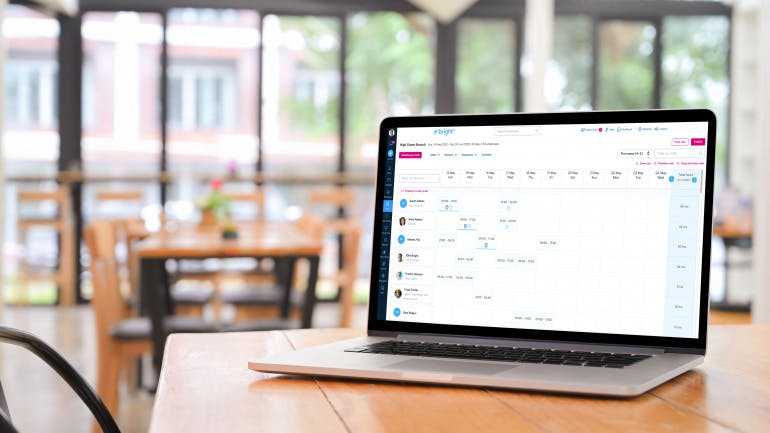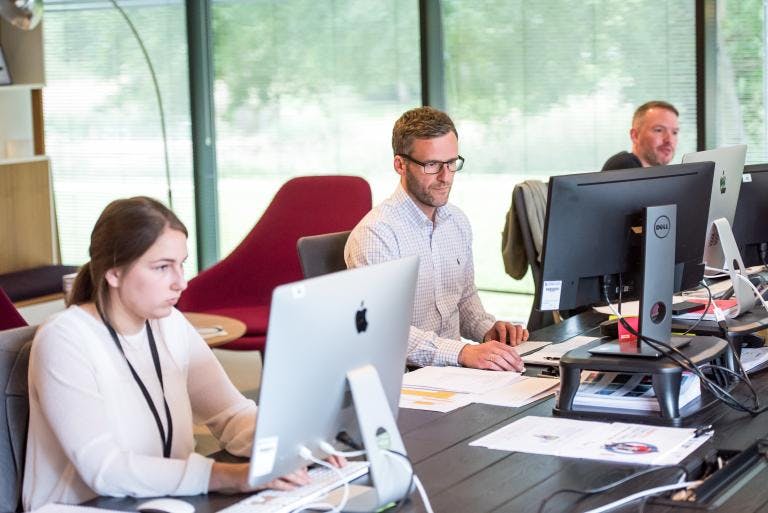First published on Thursday, Jun 04, 2020
Last updated on Friday, Jun 07, 2024
In the realm of human resource management (HRM) there are two opposing methods that businesses and human resource departments typically adopt as their HRM strategy.
They are called hard or soft HRM practices. Each approach has its own set of principles and practices that impact the overall management of human resources within a company. But is one better than the other?
Let's explore their key features, differences, advantages and disadvantages, and how finding the right balance between the two can contribute to your business success.
Hard vs soft HRM
Soft and hard HRM are two contrasting models of human resource management that shape how businesses interact with and manage their workforce. These approaches influence the strategies, policies, and practices adopted by businesses to achieve their goals.
What is hard HRM?
Hard HR management is characterised by a strategic, results-driven mindset. In this approach, employees are viewed as valuable resources, much like any other valuable assets that contribute to your business objectives. It puts emphasis on efficiency to ensure productivity and achieve concrete outcomes.
Key components of hard HRM include strict performance metrics, centralised decision-making, and a focus on strategic workforce planning.
Within the framework of hard HRM, the employment relationship is transactional, where the employer expects specific skills and outputs from employees in exchange for compensation and benefits. The business model tends to be hierarchical, with a clear chain of command and usually involves one-way communication.
What is soft HRM?
Soft HR management, on the other hand, takes a more people-centric approach. It acknowledges the importance of fostering positive relationships between employers and employees, recognising that employee empowerment and satisfaction contribute to business success.
Soft HRM focuses on prioritising open communication, employee engagement, professional development, and workplace flexibility. It's rooted in the belief that a happy and engaged workforce is more likely to be creative, innovative, and committed to your business goals.
Unlike the transactional nature of hard HRM, soft HRM promotes a progressive relationship between employers and employees, focusing on mutual trust and shared values.

The advantages and disadvantages of a hard and soft approach
What are the advantages of a hard HRM approach?
Increased efficiency and productivity: Hard HRM's focus on clearly defined roles, performance metrics, and a strategic approach to workforce planning can lead to increased efficiency and productivity. By aligning employee efforts with business goals, you can achieve better outcomes.
Cost control: Hard HRM is often associated with a strict approach to cost control. By closely monitoring performance and implementing cost-effective measures, you can optimise your business management resources and increase your profits.
Strategic decision-making: The strategic nature of hard HRM allows for centralised decision-making, allowing you to make data-driven decisions to market changes and emerging opportunities in highly competitive environments.
What are the disadvantages of a hard HRM approach?
Higher employee burnout: The constant pursuit of efficiency and productivity can lead to employee burnout. Strict metrics and targets may result in employees working too much, negatively impacting wellbeing and work-life balance.
Limited flexibility: When it comes to hard HRM, being a stickler for rules may not always be the best thing. If you're too strict about following the rules, you might miss opportunities to be innovative and respond quickly to changes in the market.
Poor employee relations: The transactional nature of hard HRM can strain employee-employer relationships. When employees feel like cogs in the machine, employee morale and job satisfaction can suffer, leading to increased turnover and a negative impact on your company culture.
What are the advantages of a soft HRM approach?
Increased employee satisfaction and retention rates: Soft HRM prioritises employee satisfaction and wellbeing by creating a positive company culture, offering professional development opportunities, and promoting a healthy work-life balance. By using soft HR practices, you can enhance retention and reduce turnover costs.
Enhanced innovation and creativity: Soft HRM recognises that motivated and engaged employees are more likely to contribute creatively. By having a transparent business model encouraging a culture of open communication and idea-sharing, you can tap into the innovative potential of your workforce.
More adaptability and flexibility: In today's rapidly changing business world, being adaptable and flexible is crucial, and that's where soft HRM comes in. When your employees feel like they're valued and supported, they're more willing to take on change and help build a resilient business.

What are the disadvantages of a soft HRM approach?
Potential for reduced accountability: Focusing too much on how you treat employees in soft HRM could make employees feel less accountable for bad performance. If there are no clear goals and ways to measure performance, employees might get too comfortable, and your business's overall performance could suffer as a result.
Difficulty in measuring impact: It can be tough to measure the impact of soft HRM practices, like creating a positive company culture, using numbers. This can make it tricky for you to figure out how these initiatives affect your business outcomes, which makes strategic planning harder.
Cost concerns: The soft HRM model is all about putting employees first. This is great for them, but it also means you have to spend more money on things like training opportunities, wellness programs, and flexible schedules. Finding the right balance between investing in these things and staying within your business budget can be a challenge.
The right balance between soft HRM and hard
In today's world, hard HRM is viewed as an old-fashioned style of management and soft HRM is a more democratic leadership style.
While hard and soft HRM are often presented as opposing models, the reality is that most businesses exist on a spectrum, incorporating elements of both approaches.
So, striking the right balance between soft and hard HRM is essential for long-term success. This balance creates higher levels of employee engagement, improves talent retention, enhances adaptability to change, encourages innovation and creativity, and optimises performance.
Here's how you can achieve this:
Tailor your approach to your business
To achieve this balance, you need to recognise that the optimal balance between hard and soft HRM will vary based on your industry, size, and culture. Because what works for a technology startup may not be suitable for a traditional manufacturing company.
Align HR strategies with your business goals
If you want to get the most out of your HRM, it's important to match it up with your business objectives. Hard HRM works best where employees need to hit targets and be efficient, like in operations. Soft HRM is better where employees need to be creative, work together, and come up with new ideas, like in marketing. By tailoring your HRM practices to each department, you can give your business the best possible chance of success.
Invest in employee development
Regardless of your HRM strategy, investing in employee development is a win-win. Both hard and soft human resource management can benefit from a skilled and motivated workforce. Offer training programs, mentorship opportunities, and career advancement paths to enhance employee capabilities and loyalty.

Promote communication and collaboration
It’s important to foster open communication channels and collaboration within your business. This not only improves employee experience and engagement but also allows for the exchange of ideas that can benefit both the workforce and the business as a whole.
Embrace technology
You can automate routine HR tasks by leveraging technology to streamline HR processes and enhance employee experiences. Allowing yourself, your HR department or HR managers to focus on more strategic aspects of workforce management, such as talent development and retention.
Regularly evaluate and adjust your strategies
The business environment is constantly evolving, and so should your HR strategies. Regularly evaluate the effectiveness of your HR practices and be willing to adjust your approach based on feedback from employees, current trends, and your changing business needs.
Human resource management with BrightHR
Balancing hard and soft HRM, while recognising their potential disadvantages, can greatly benefit your business. When these approaches are integrated harmoniously, it creates a company culture where employees feel appreciated, motivated, and aligned with business objectives.
As an employer, your ability to maintain this balance will not only lead to the success of your business but also promote a positive workplace that attracts and retains top talent in the ever-evolving landscape of the modern workforce.
And to make things easier for you to achieve this BrightHR is here to help. With everything you need to manage your workforce in one place, BrightHR saves you time and money, while helping you grow.
But that’s not all. BrightHR has seamlessly integrated appraisal systems to empower employees like a learning management system with CDP-accredited learning courses, an employee recognition programme—Praise, employee perks and 24/7 wellbeing support.
Discover why BrightHR is the number one choice for people management software that evolves with your business no matter your management style in the fast-paced business landscape. Book a free demo today.
Have a question?
Ask away, we’ve got lightning fast answers for UK business owners and employers powered by qualified experts.










